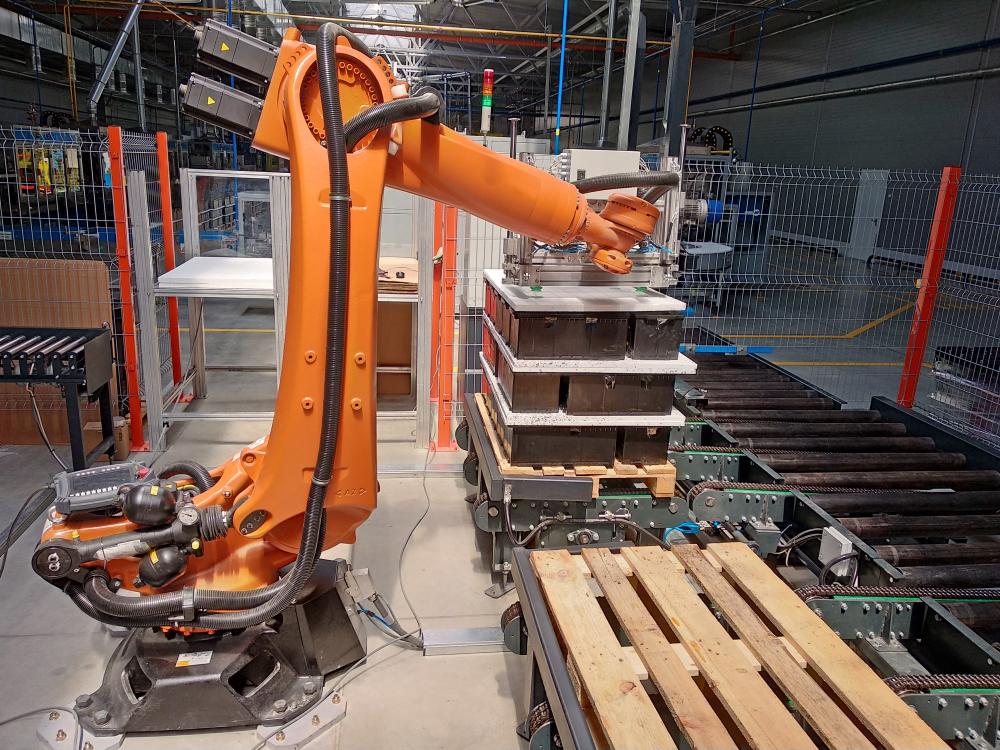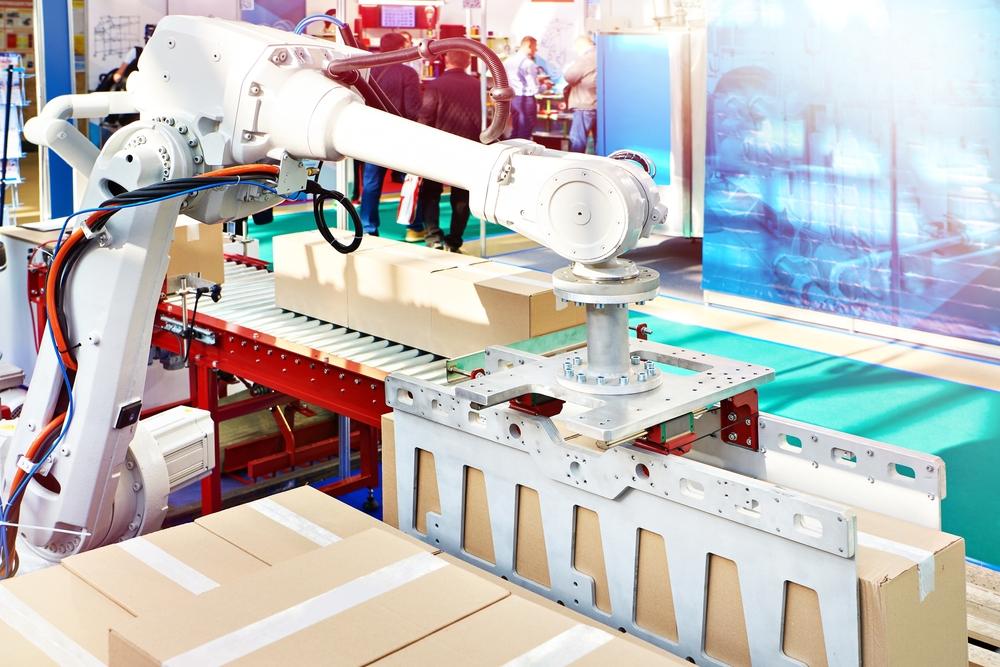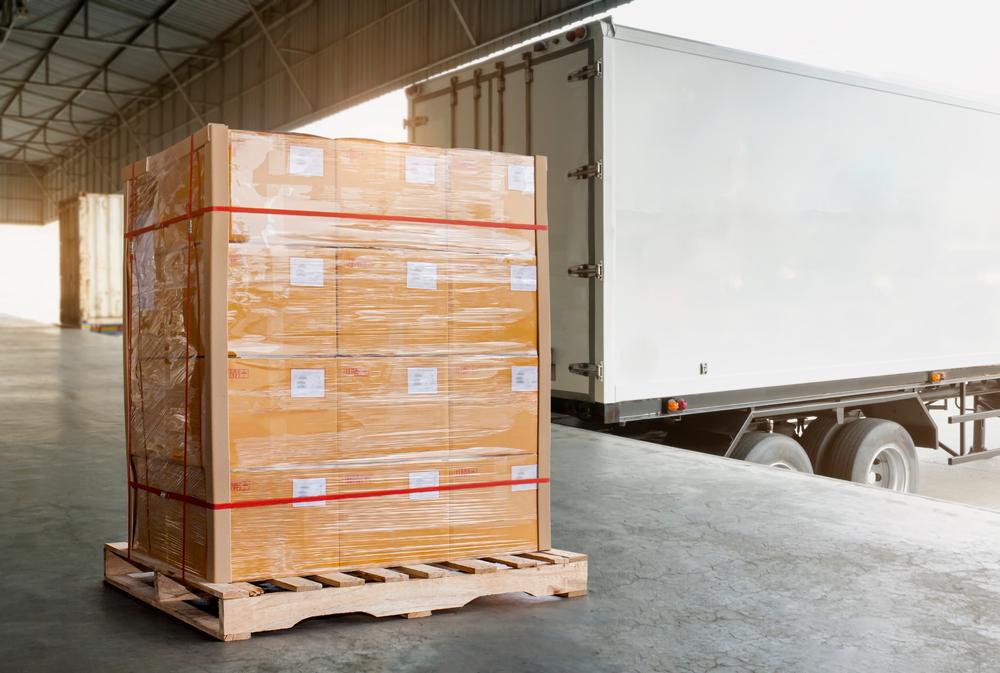Every business dealing in physical products and materials has space dedicated for shipping and receiving goods. Once goods reach a large enough volume, they are often packed onto a wooden platform called a pallet. Pallets make moving and shipping products significantly easier as they fit compactly in transports like semi trucks, and can be moved around with tools like pallet jacks and forklifts.
What Does Palletizing Mean?
Palletizing is when goods are loaded onto a pallet. The goods must be packed securely so they are unlikely to move around during transit. Once properly stacked, they are typically shrink-wrapped to hold securely.
What Does Depalletizing Mean?
Depalletizing is the opposite process of palletizing; it is unloading goods or materials from a pallet, usually onto a production line.
Repalletizing is similar in that it involves depalletizing from one pallet and placing those goods onto another pallet to be shipped elsewhere.
Similarities of Palletizing and Depalletizing
Before we look at the main differences and challenges between the two, let’s look at what is similar.
Some similarities between palletizing and depalletizing include:
Simple, Repetitive Tasks
Palletizing and depalletizing both involve moving products or goods from one place to or from a pallet. Traditionally this is done manually; however, the repetitive nature of the task, combined with the weight of the goods, can pose a threat to your employees’ physical health, as it increases injury risk.
Dull Tasks
Both palletizing and depalletizing are dull and repetitive tasks that people don’t like to perform manually. Most employees can handle some tedious, repetitive tasks, but if their job is the same monotonous task all day, every day, you’ll find you have a high turnover rate.
High turnover has its own costs, with wasted HR hours finding, interviewing, doing background checks or drug tests, and onboarding training hours.
A Bottleneck
Often one of the biggest bottlenecks in production and shipping is inefficient palletizing or depalletizing. Holdups in production lines are the same as lost money, which is why it’s important to implement successful and well-structured palletizing and depalletizing strategies.
Robots as a Palletizing and Depalletizing Solution
Dull, simple, repetitive tasks involving manual labor like this have a great solution – palletization robotics. Palletizing robots significantly boost the productivity of a shipping department and free up employees to focus on other parts of the job.
While robotic solutions excel the most with boxes, specialty equipment can be designed to handle other materials, such as bags, trays, cases, totes, and pails.
Because palletization and depalletization are so similar, the same robot can often be used for both processes if your required throughput can be managed between the two.

Should You Consider Robotic Pallet Loading and Unloading Equipment?
There are a lot of factors to consider when considering automating your palletizing and depalletizing. Here are some questions to get you started:
- Do you have enough volume to justify automation? You should have at least one shift worth of operation.
- Do you have more bottlenecks at your workflow’s beginning or end?
- What would be your throughput for both ends together? Is your in or out volume on one end of your process low enough to consider using a single robot?
- How would you finance it?
If you’ve decided that a palletizing and depalletizing robot is right for you, your next step is to determine the design considerations for the robot. While palletizing and depalletizing have many similarities, the differences between the two loom much more prominently when it comes to robotics.
Differences Between Robotic Palletizing and Depalletizing
The three main design factors that must be considered when looking at automated palletizing and depalletizing processes are materials and goods, arrangement, and speed. Let’s take a look at each of these individually.
Robotic Pallet Loading Equipment
Robot palletizers load goods and materials onto a pallet, securely packing it to prepare it for shipping. Palletizers can do the following processes: pallet placement, unit load stacking and slip sheet placement. A robotic palletizing system has three key factors: materials, arrangement, and speed (cycle time).
Loading Goods and Materials
The material, object, or package being loaded on the pallet is the first thing to consider. The shape and weight of the object will determine the robot arm, EOAT (End of arm Tool), and if needed vision sensor.
Is your robot stacking boxes? Cases? Bags? Odd-shaped packages? Or some mix of those? Will materials being palletized be identically-shaped packages? Or will there be different sizes? Will they all be rectangular? Some translucent materials are challenging for robotic vision to “see.”
If you have multiple SKUs on a pallet, how will the robot differentiate between them? Does it have to scan an item bar or QR code? Are packages or identifiers color coded? How heavy are the materials?
All of these factors will play a part in the size and strength of the arm, how the EOAT (End of Arm Tool) will grip the materials, and how the sensors will see the materials.
Arrangement
Are the objects being palletized arriving on a conveyor belt? Are empty and/or filled pallet conveyors needed for the system? How are they organized on the pallet? Can they be placed anywhere on it, or is there a specific pattern? Do slip sheets need to be added between goods?
Goods and materials must be arranged and packaged so they do not shift much in transit.
Speed
Throughput is an essential consideration for palletizing automation. If the robot cannot keep up with a production line, huge backups and bottlenecks occur. If your palletizer gets backed up, does your conveyor belt stop moving? If the conveyor belt stops moving, what effects does that have?
A robot’s speed is called its “cycle time.” The cycle time mostly depends on the robot’s application reaction time and arm speed, but it can also be affected by adding steps in its process, such as pacing pallets, placing slipsheets, or having to do scanning of QR or bar codes.


Robotic Depalletization Unloading Equipment
Depalletizing robots unpack goods, materials, or packages from a pallet and put those items into a production line, a handling process, or another pallet.
Depalletizers might be used to unitize or consolidate smaller units into larger ones. Or they may be used for row or layer picking – that is, picking up a row or layer from a pallet and placing it on another pallet or conveyor.
Material
Just like palletizing, the type of material affects the robot arm, EOAT, and sensors. Different materials may require a special EOAT, payload, and sensors.
Unlike palletizing, depalletizing can come with several challenges. Pallets may have been stacked and received in a precarious or illogical manner. Items on pallets may have moved around in transit, so depalletizers have to account for such movement, or they will make mistakes. This uncertainty in the material layout often requires additional vision sensors and added complexity to the robot’s application program.
Is the pallet a single SKU or a mix of several SKUs? Multiple SKUs, and additionally multiple sizes or shapes of an item, make depalletizing much more challenging and requires more sophisticated robot application programs.
Arrangement
The robot has to pick the correct material in the correct quantity from the original pallet and place it in the proper location. Sometimes, the machine can confuse two tightly packed boxes, or bags, for a single package. This results in incorrectly picked items, dropped items, and incorrect quantities.
Speed
Speed is still important for depalletizing, but the two critical factors are material and pallet arrangement. A palletizer is used at the end of the process and, therefore, could be one of the most significant bottlenecks. A depalletizer is used near the beginning of the process and can spend more time ensuring that everything is accurate.
Automation Solutions
Are you ready for a new, efficiently automated solution to your palletizing and depalletizing needs? Our team of robotic and conveyor experts at IBT can help you automate your systems to improve efficiency and remove bottlenecks.Reach out to our dedicated team of automation experts today to improve the performance of your operation by calling (913) 261-2117 or requesting a quote.





